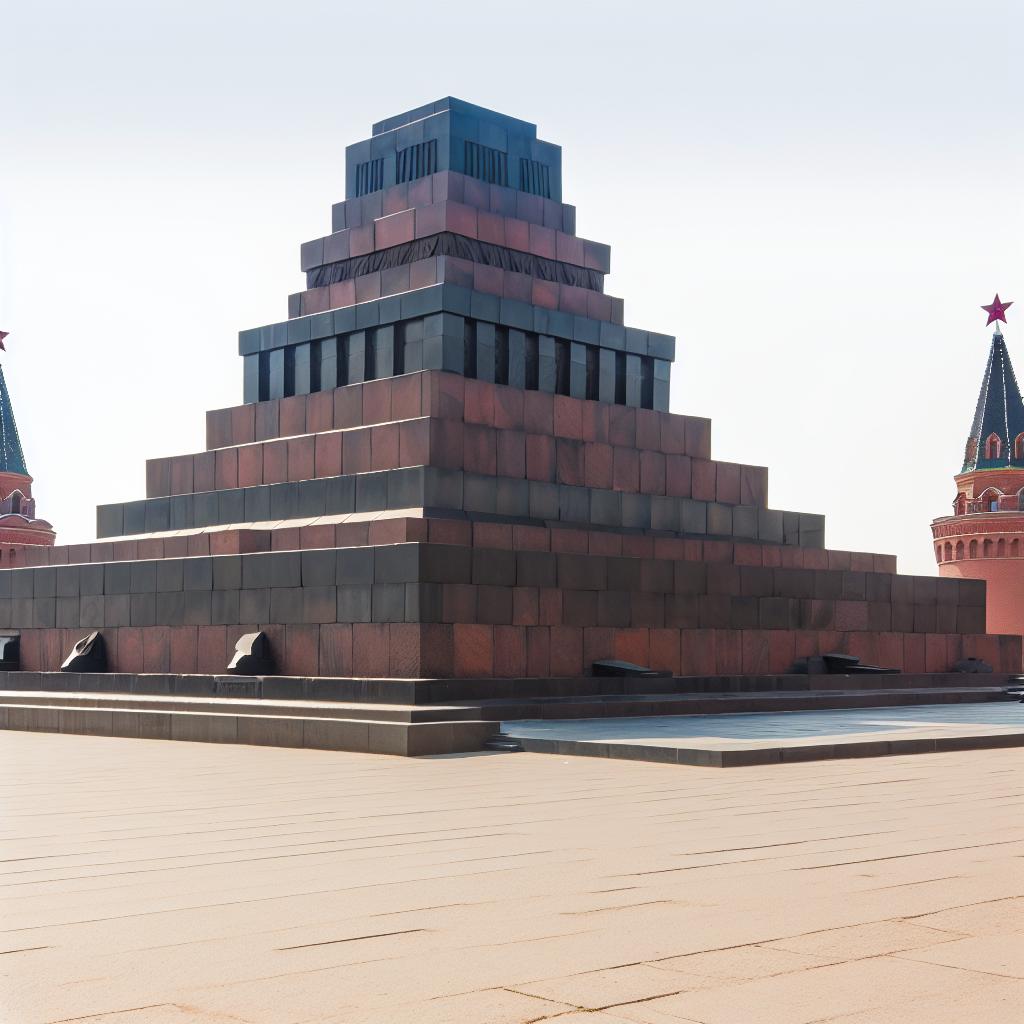Overview of Lenin’s Mausoleum
Located in the heart of Moscow’s Red Square, Lenin’s Mausoleum serves as the final resting place of Vladimir Lenin, the leader of the Bolshevik Revolution. This architectural monument holds significant historical and political importance in Russia.
Historical Background
The establishment of Lenin’s Mausoleum is rooted in the turbulent period following Lenin’s death in January 1924. The decision to preserve his body was made swiftly due to Lenin’s towering status as the revolutionary leader who played a crucial role in shaping Soviet Russia. Within a mere six weeks, a temporary wooden structure was erected to facilitate public mourning, allowing citizens to pay their respects to the late leader. As Lenin’s influence persisted, the government recognized the need for a more enduring monument. Consequently, in 1930, a permanent granite mausoleum was constructed, designed meticulously by architect Alexey Shchusev. This new structure was not merely a burial site but a symbol of the Soviet regime’s reverence for its founding leader.
Architecture and Design
The architectural design of Lenin’s Mausoleum draws inspiration from the principles of constructivism and monumentalism, reflecting the ideals of the Soviet state. The mausoleum’s austere, cubic form is a stark representation of the era’s architectural style, characterized by geometric simplicity and imposing forms. Constructed using a mix of red granite, labradorite, and other stones, the mausoleum harmonizes with the surrounding structures of Red Square, including the iconic Kremlin Wall. Inside the mausoleum, the interior is dimly lit, which serves to accentuate the solemnity of Lenin’s displayed body, making the atmosphere both reverent and contemplative.
Preservation Techniques
The preservation of Lenin’s body is a scientific endeavor that continues to this day. The embalming process involves sophisticated techniques to keep the body in a recognizable condition, reflecting the importance placed on Lenin’s physical legacy. Specialists at a dedicated laboratory undertake this meticulous task, utilizing chemical solutions and ensuring the environment within the mausoleum is temperature-controlled. Regular maintenance and monitoring are crucial, as this preservation effort is an ongoing commitment to maintaining the integrity of Lenin’s embalmed body.
Visitor Experience
For those visiting Moscow, Lenin’s Mausoleum is an essential stop on a historical tour of the city. However, it is important to note that security measures are stringent, and certain protocols must be followed to ensure a respectful environment. Photography is strictly prohibited inside the mausoleum, a rule enforced to preserve the sanctity of the site. Visitors must enter through a designated line, often facing lengthy waits due to the mausoleum’s popularity. Once inside, maintaining a respectful silence is highly encouraged, as the solemnity of the experience and the historical weight of the site demand quiet reflection.
Current Status and Public Perception
Since the dissolution of the Soviet Union in 1991, Lenin’s Mausoleum has become a focal point of debate and discussion. The question of whether Lenin’s body should remain on public display has sparked varied opinions among Russian citizens and politicians. Despite ongoing discussions about potentially re-burying Lenin, the mausoleum remains open to the public, continuing to attract tourists and Lenin admirers from around the world. For some Russians, the mausoleum stands as a venerable historical site that preserves the memory of a pivotal figure in Russian history. Conversely, others view it as an anachronistic symbol of Soviet power, questioning its place in contemporary Russian society.
Further Research
To better understand Lenin’s Mausoleum and its broader context, those interested are encouraged to explore a variety of academic resources. Academic articles, scholarly books, and research papers delve into the mausoleum’s historical, cultural, and political significance. Additionally, museums and educational institutions often provide comprehensive insights into the life of Vladimir Lenin and the wider ramifications of the Russian Revolution. Engaging with these resources offers a deeper appreciation for the complexities surrounding Lenin’s Mausoleum and its enduring legacy in Russian history.

